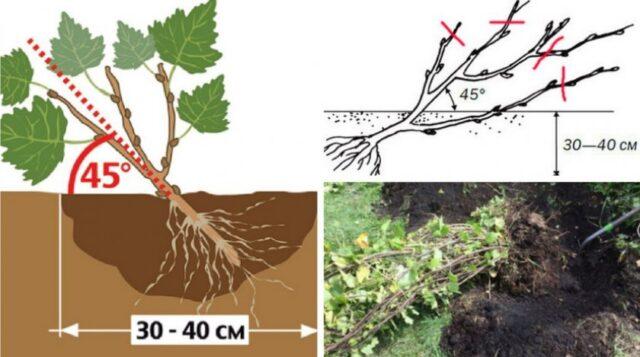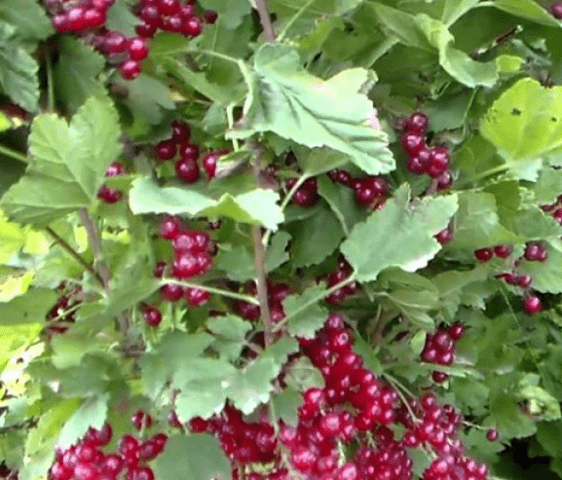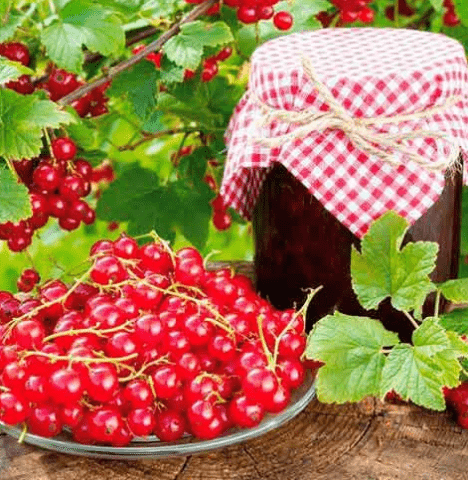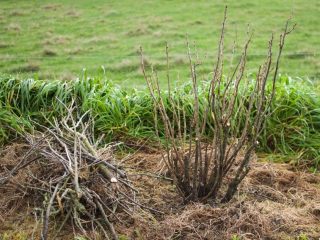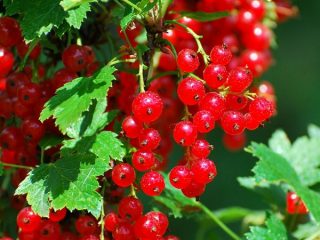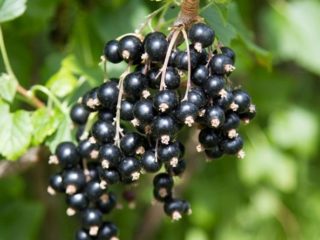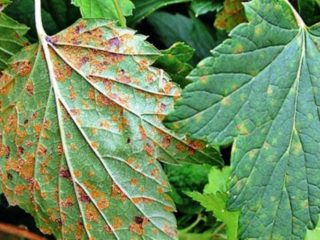Content
Red currant Darnitsa is a variety with a high yield, large, tasty and fragrant berries. It belongs to the fourth zone of winter hardiness, which makes it possible to grow a crop in most Russian regions.
Breeding history
The currant of the Darnitsa variety was obtained by Russian breeders on the basis of crossing two varieties:
- Altai early;
- Rondom.
However, there are other data: this is a Dutch selection, bred on the basis of IS UANN by specialists Kopan V.P. and Kopan K.M. (Ukraine). The culture is medium early, characterized by good winter hardiness, high immunity and ease of care. It is not included in the register of breeding achievements of the Russian Federation, but it is known to many gardeners.
Description of the red currant variety Darnitsa
The Darnitsa red currant bush is erect, with strong shoots of moderate thickness. Spreading branches, dense crown. The branches are pinkish, have no pubescence, darken with age. The plant is vigorous, reaching 150–170 cm in height.
Currant Darnitsa is distinguished by very large berries of bright red color. Fruit weight reaches 1.2–1.5 g, which distinguishes them favorably against the background of many other varieties. The taste is pleasant, balanced, with hints of sweet and delicate sourness. The tasting score is high - 4.75 points. The surface of the berries is shiny, the skin is moderately dense, the separation is dry, so it is convenient to harvest the crop by hand.
They can be used to make jellies, preserves, juices, fruit drinks, mousses and even homemade wine. Also, the fruits can be frozen to be consumed fresh in winter.
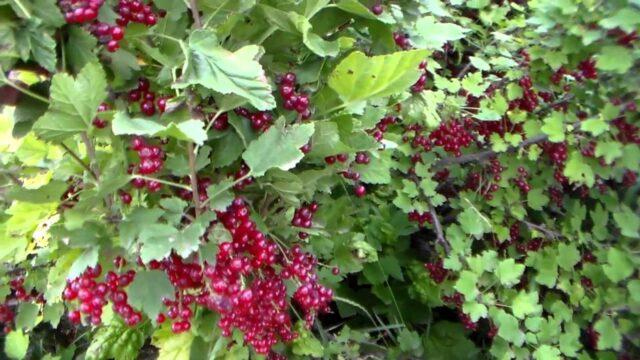
Red currant Darnitsa bears fruit in early July
Characteristics
The variety is distinguished by good resistance to adverse weather conditions, diseases and pests. The bushes give a stable harvest even if the minimum growing rules are followed.
Drought tolerance, winter hardiness
The red currant variety Darnitsa is distinguished by its high winter hardiness (zone 4, withstands frosts down to -34 degrees without shelter). Therefore, the bushes can be successfully planted both in the middle lane and in the south, and in regions with a more severe climate:
- Northwest;
- Ural;
- Siberia;
- Far East.
The variety tolerates drought well. To harvest a good berry crop, the plant should be watered weekly during the hot season.
Pollination, flowering period and ripening times
The red currant Darnitsa is self-pollinated: its flowers, without the participation of bees and other pollen carriers, form ovaries themselves. Flowering begins in mid-June, medium-early fruiting: fruits ripen in the first half of July.
Productivity and fruiting, keeping quality of berries
The red currant variety Darnitsa is a fruitful one. In favorable weather conditions and subject to agricultural technology, 10–12 kg of berries can be harvested from one adult bush. Ripening proceeds amicably, in one wave, which greatly facilitates harvesting.
The berries have a medium skin density. Therefore, they do not differ in long-term keeping quality. For the same reason, fresh fruits cannot be transported over long distances.
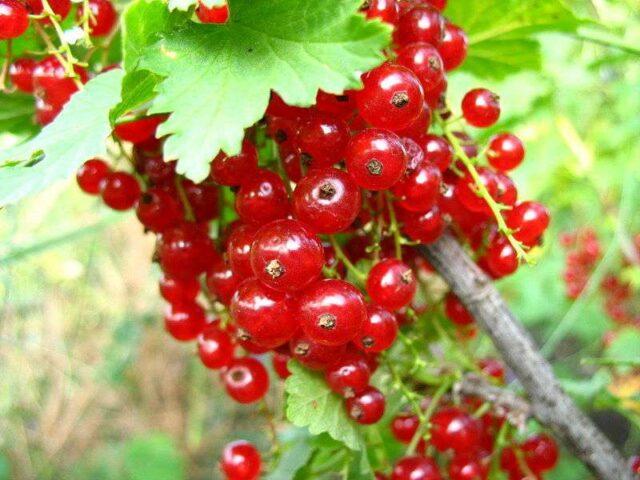
Ripe Darnitsa berries come off well from the petioles, leaving no pulp
Disease and pest resistance
Red currant has a very good immunity. The Darnitsa variety rarely suffers from such common diseases:
- anthracnose;
- powdery mildew;
- septoria.
For prevention, it is enough to carry out a single treatment with fungicides in the spring. To do this, you can use:
- "Maksim";
- Fitosporin;
- "Speed";
- Fundazol;
- bordeaux liquid.
If there is an accumulation of insects in the garden, the Darnitsa red currant bushes can be treated 1-2 times with folk remedies:
- a solution of soap with ash, mustard powder;
- decoction of marigold flowers;
- infusion of chili pepper, garlic cloves.
You can also use insecticides: "Confidor", "Match", "Decis", "Aktara", "Green soap" and others.
Advantages and disadvantages
The variety is appreciated by summer residents for its very pleasant taste, stable yield and large fruits. Culture has other benefits as well.
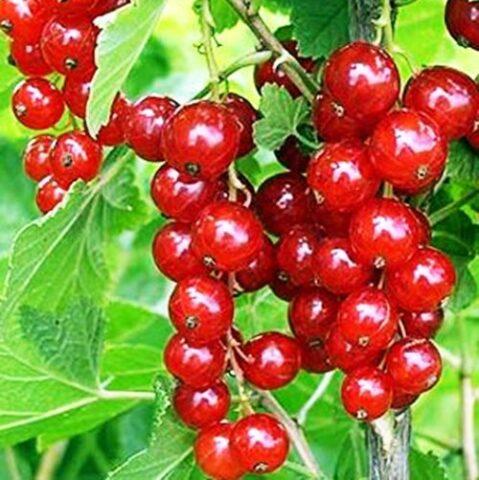
Darnitsa red currant berries pleasantly surprise with their size, taste and aroma
Pros:
- high productivity;
- undemanding care;
- resistance to frost and drought;
- self-fertility;
- excellent immunity to major diseases;
- relatively early ripening;
- versatility in application.
Minuses:
- average keeping quality and transportability;
- spreading bushes, grow;
- requires regular watering.
Features of planting and care
Darnitsa red currant seedlings are purchased from trusted suppliers in early April. They need to be examined carefully. The shoots must be healthy, the roots moist. Leaves must be checked for foreign stains. The optimum height of the seedling is 30–35 cm.
The site for planting is prepared on the eve of the fall;
- cleared of weeds;
- digging shovels onto the bayonet;
- make humus or compost at the rate of 1 bucket per 2 m2;
- if the soil is clay, 1 kg of sawdust or sand is embedded in the same area.
In early April, several planting holes are dug up to a depth of 50–60 cm. Small stones are placed on the bottom. Landing Algorithm:
- The roots of Darnitsa red currant seedlings are soaked in a growth stimulator: "Epin", "Kornevin".
- Thoroughly straighten, planted at an angle of 45 degrees, as shown in the diagram.
- Sprinkle with fertile soil with peat, compost or humus.
- Add 2 tsp to each well. wood ash.
- The root collar is deepened by 5–7 cm.
- Tamped, watered.
- A month later, they fill up the earth, again tamp it a little and mulch it with peat, sawdust, straw or other material.
The Darnitsa red currant variety is unpretentious, but in the first 1.5 months the seedlings need special care. At this time, they are watered 2-3 times a month with warm, settled water (5 liters per plant). When planting or a week later, total pruning is carried out, leaving shoots no more than 30 cm high (with 4–5 buds).
If the soil is fertilized, additional fertilizing is not needed in the first season. To obtain a good harvest of currants (starting from the second year), it is regularly fertilized according to this schedule (all dosages are indicated for one bush):
- In early April - nitrogen fertilization (urea 20 g or ammonium nitrate 15 g per 10 l).
- During flowering and during the formation of ovaries - complex mineral fertilizer (30–40 g per 10 l).
- After harvesting, red currants can be fed with wood ash (100-200 g) or given a mixture of superphosphate and potassium salt (1 tablespoon each).
Starting from the end of June, when carrying out fertilizing, it is necessary to completely exclude nitrogen-containing components.
Another care tip is regular (every spring) pruning of currant bushes. They do this at the end of March, when the snow has melted, but the sap flow has not yet begun. All diseased and damaged branches must be removed. It is not necessary to cover the bush for the winter.In regions with a harsh climate, it is better to sprinkle young seedlings with foliage, sawdust, needles, straw or other materials.
Conclusion
Red currant Darnitsa is an unpretentious variety that gives a consistently high yield even with minimal care. Particular attention should be paid to watering and feeding. The rest of the rules of agricultural technology are standard: weeding, pruning, loosening the soil.
